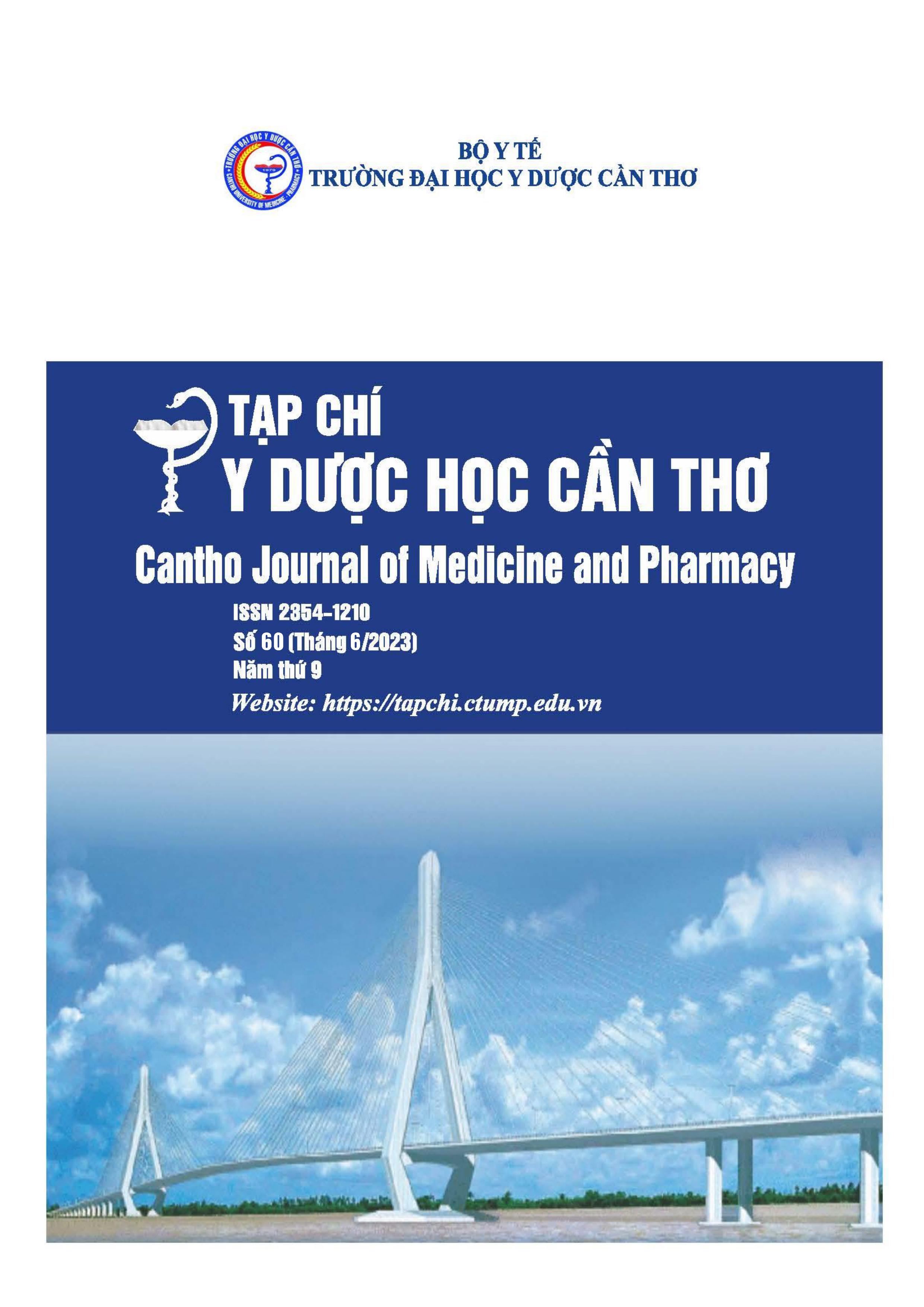SURVEYING OF PREVALENCE, CLINICAL AND SUBCLINICAL CHARACTERISTICS, SOME RELATED FACTORS OF LONG QT SYNDROME IN PATIENTS WITH CORONARY ARTERY DISEASE AT CARDIOVASCULAR CENTER, CAN THO CENTRAL GENERAL HOSPITAL IN 2021 – 2023
Main Article Content
Abstract
Background: Long QT syndrome is a disorder that increases the risk of sudden death from severe arrhythmia in patients with coronary artery disease. Objective: To surveying of prevalence clinical and subclinical characteristics, some related factors of long QT syndrome in patients with coronary artery disease. Materials and methods: A cross-sectional descriptive study was conducted on 922 patients with coronary heart disease hospitalized at Cardiology Center, Can Tho Central General Hospital. Results: The results showed that 59 patients had long QT syndrome (6.4%). The proportion of women was 1.8 times that of men. Statistically significant related factors were: Female (p<0.01), BMI underweight (p<0.01), hypokalemia (p=0.024), hypocalcemia (p<0.01) and use multiple drugs that prolong the QT interval (p=0.017). Conclusion: The rate of QT prolongation in patients with coronary artery disease is 6.4% and the treatment issue should take into account related factors such as female, BMI underweight, hypokalemia, hypocalcemia and the use of multiple drugs that prolong the QT interval to limit the risk of severe arrhythmias.
Article Details
Keywords
Long QT syndrome, coronary artery disease, QTc, related factor
References
2. Pye M, Quinn A.C, Cobbe S.M. QT interval dispersion: A non- invasive marker of susceptibility to arrythmia in patients with sustained ventricular arrhythmias?. British Heart Journal. 1994. 71 (6), 511-514, https://doi.org/10.1136/hrt.71.6.511.
3. Knuuti J, Wijins W, Saraste A, Capodano D, Barbato E, et al. 2019 ESC Guidelines for the diagnosis and management of chronic coronary syndromes: The Task Force for the diagnosis and management of chronic coronary syndromes of the European Society of Cardiology (ESC). European Heart Journal. 2020. 41 (3), 407-477.
4. Kazuo K, Takeshi K, Masaharu I, Yoshihisa N, Koichi N, el al. JCS 2018 Guideline on Diagnosis and Treatment of Acute Coronary Syndrome. Circulation Journal. 2018. 1092-1105.
5. Rautaharju P.M, Surawicz B, Gettes L.S, Bailey J.J, Childers R, et al. AHA/ACCF/HRS recommendation for the standardization and interpretation of the electrocardiogram: part IV: the ST segment, T and U waves, and the QT interval: a scientific statement from the American Heart Association Electrocardiography. Journal of America College Cardiology. 2009. 53 (11), 982-991.
6. Mahmud R, Gray A, Nabeebacus A, Whyte M.B. Incidence and outcomes of long QTc in acute medical admissions. International Journal of Clinical Practice. 2018. 72(11), 1-8, https://doi.org/10.1111/ijcp.13250.
7. Nguyễn Vũ Thắng, Phạm Trần Linh. Nghiên cứu đặc điểm biến đổi khoảng QT ở bệnh nhân nhồi máu cơ tim cấp có ST chênh lên tại Viện Tim mạch Việt Nam. Tạp chí Y học Việt Nam. 2020. 495 (2), 59-62.
8. Yu H, Zhang L, Liu J, Liu Y, Kowey P.R, et al. Acquired long QT syndrome in hospitalized patients. Heart Rhythm. 2017. 14 (7), 974-978, https://doi.org/10.1016/j.hrthm.2017.03.014.
9. Tisdale J.E, Wroblewski H.A, Overholser B.R, Kingery J.R, Trujillo T.N, et al. Prevalence of QT interval prolongation in patients admitted to cardiac care units and frequency of subsequent administration of QT interval-prolonging drugs: a prospective, observational study in a large urban academic medical center in the US. Drug Safety. 2012. 35 (6), 459-470, https://doi.org/10.2165/11598160-000000000-00000.
10. Cinca J, Figueras J, Tenorio L, Valle V, Trcnchs J, et al. Time course and rate dependence of Q – T interval changes during noncomplicated acute transmural myocardial infarction in human beings. America Journal of Cardiology. 1982. 1023-1031.
11. Trần Kim Trang, Trị số độ biến thiên QT trong bệnh nhồi máu cơ tim, Tạp chí Y học TP. Hồ Chí Minh. 2003. 7 (1), 58-62.
12. Rautaharju P.M, Zhou S.H, Wong S, Calhoun H.P, Berenson G.S, et al. Sex differences in the evolution of the electrocardiographic QT interval with age. Canadian Journal of Cardiology. 1992. 8 (7), 690-695.
13. Arya A. Gender-related differences in ventricular repolarization: beyond gonadal steroids. Journal of cardiovascular electrophysiology. 2005. 16 (5), 525-527.
14. Numaguchi H, Johnson J.P Jr, Petersen C.I, Balser J.R. A sensitive mechanism for cation modulation of potassium current. Nature Neuroscience. 2000. 3 (5), 429-430, https://doi.org/10.1038/74793.
15. Nguyễn Việt Khoa, Nguyễn Văn Quỳnh. Mối liên quan giữa khoảng QT với hình thái và chức năng thất trái ở bệnh nhân nhồi máu cơ tim cũ. Tổng hội Y học Việt Nam. 2008. Nội khoa tháng 1, 24-30.


